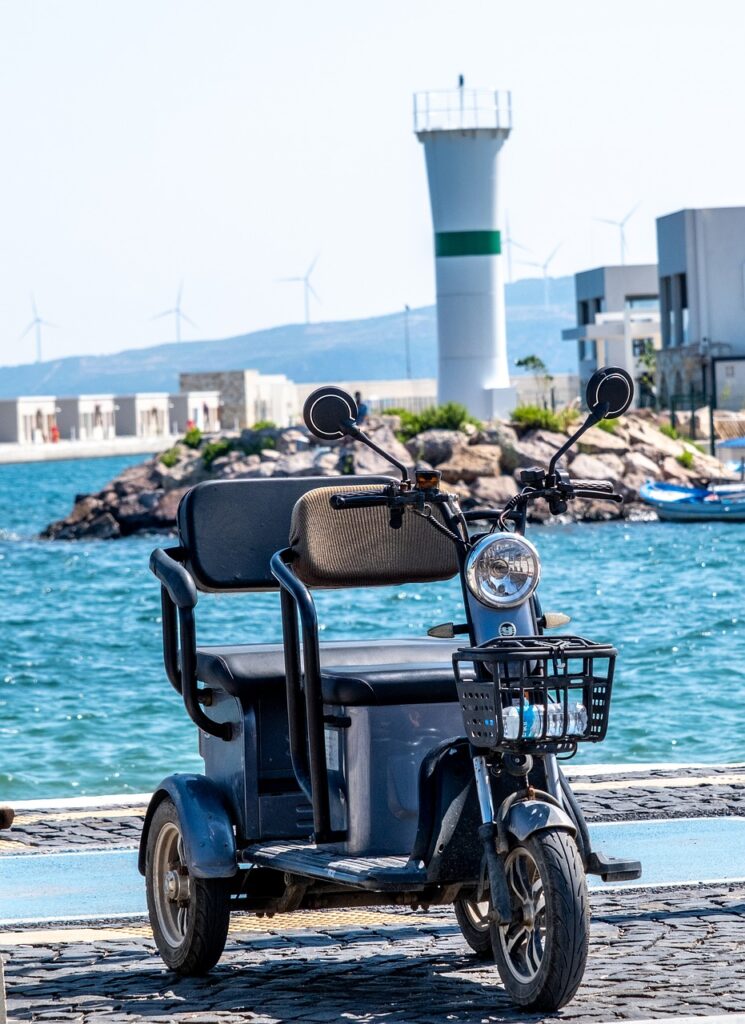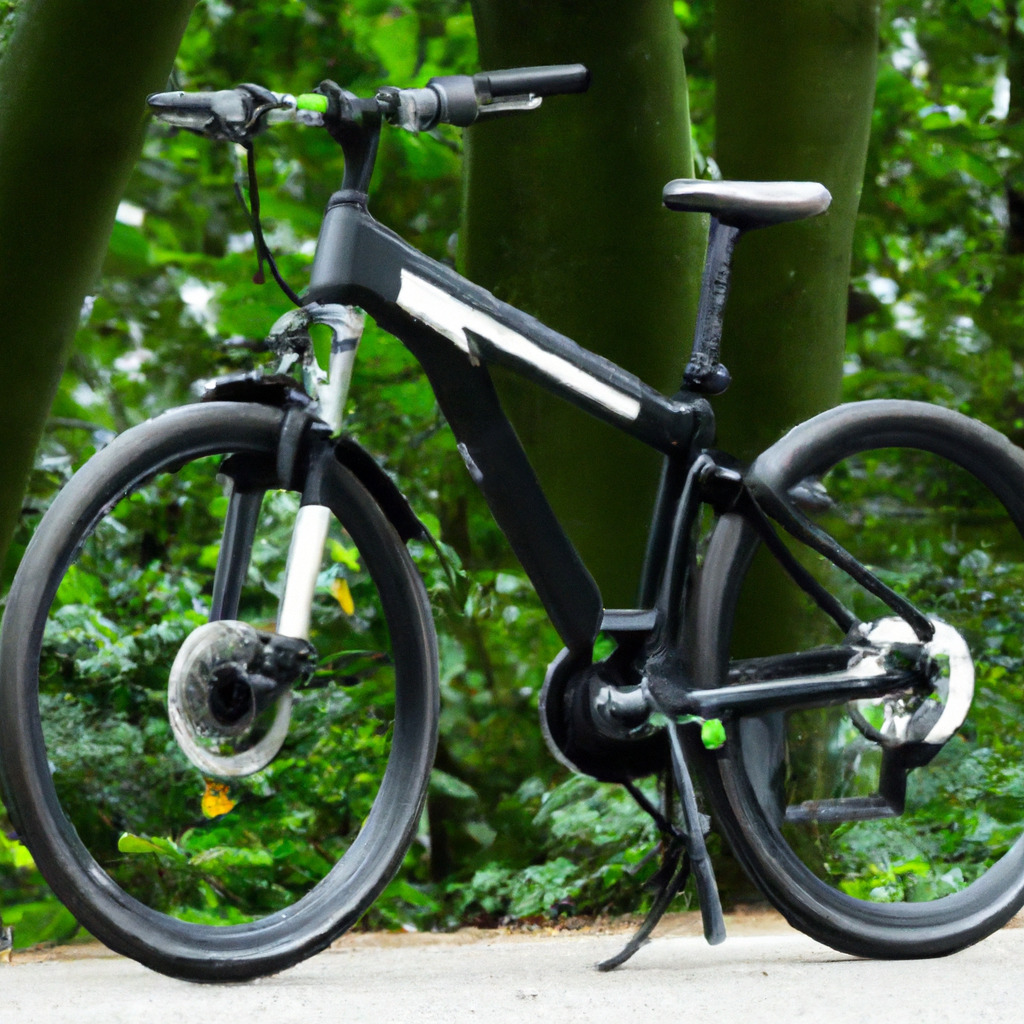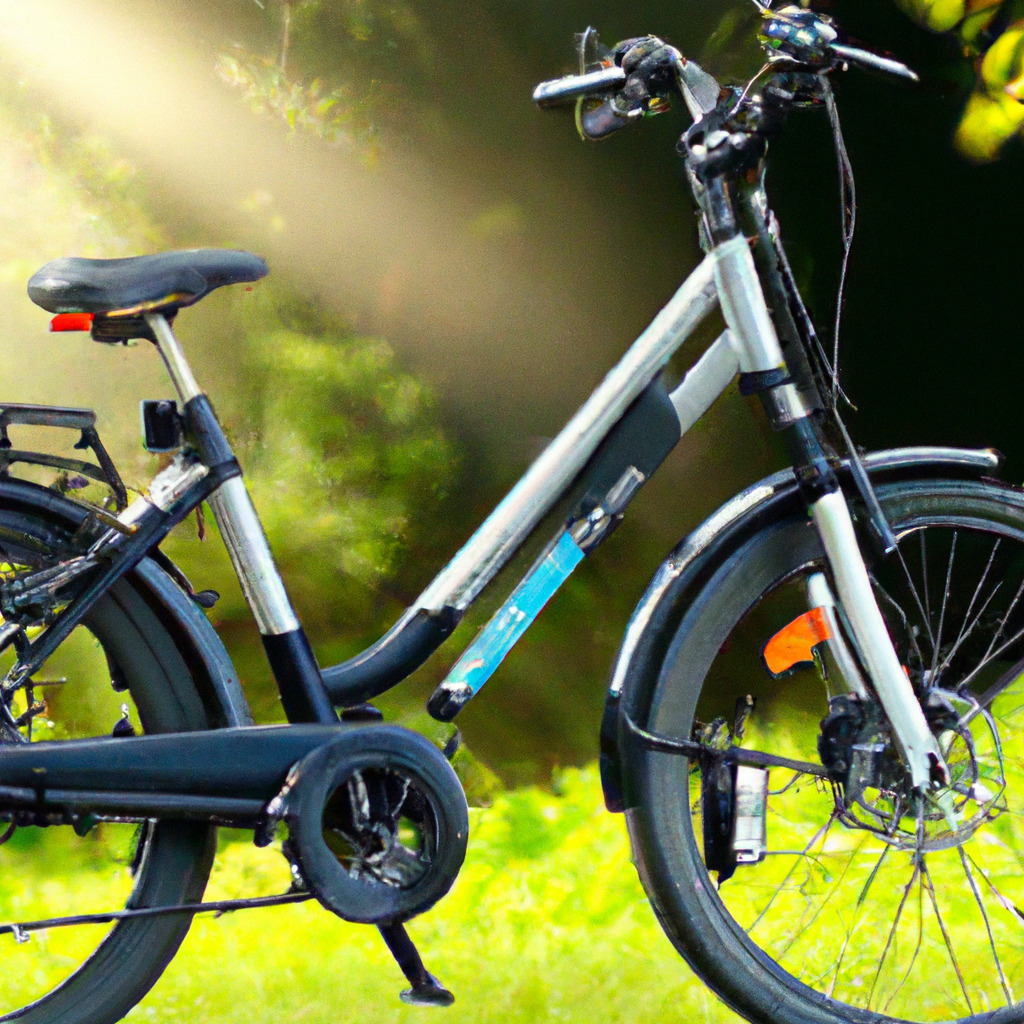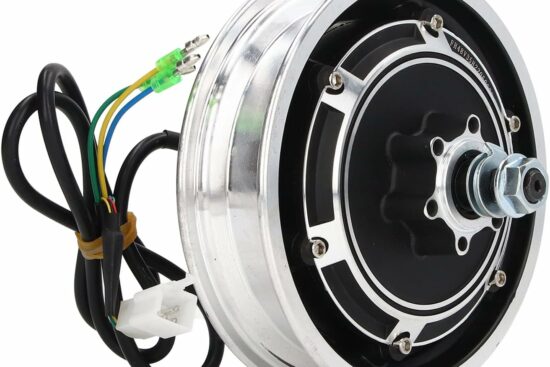
electric bikes have emerged as a potential solution to the ever-growing concern of carbon emissions. With the increasing demand for sustainable transportation options, these innovative and environmentally-friendly vehicles have gained significant popularity. Electric bikes, equipped with a battery-powered motor, offer a cleaner alternative to traditional petrol or diesel-powered vehicles. This article examines the potential of electric bikes in reducing carbon emissions and their impact on the environment, highlighting their advantages and challenges in implementing this green transportation solution.

Overview
What are electric bikes?
Electric bikes, also known as e-bikes, are bicycles that are equipped with an electric motor and a battery. This motor provides assistance to the rider, allowing them to pedal with less effort and travel at higher speeds. Electric bikes come in various forms, including city bikes, mountain bikes, and even cargo bikes, catering to different needs and preferences.
The problem of carbon emissions
Carbon emissions, primarily from the burning of fossil fuels, contribute to air pollution and climate change. Conventional transportation relies heavily on fossil fuel-powered vehicles, such as cars and motorcycles, which release significant amounts of carbon dioxide (CO2) and other harmful pollutants. This presents a pressing challenge as we seek to reduce our carbon footprint and transition towards more sustainable modes of transportation.
The potential of electric bikes
Electric bikes offer a promising solution to the problem of carbon emissions in transportation. By combining pedaling with electric assistance, they provide a greener and more sustainable alternative to conventional bikes and fossil fuel-powered vehicles. Electric bikes have the potential to significantly reduce carbon emissions, improve air quality, and promote a healthier and more active lifestyle.
Advantages of Electric Bikes
Zero tailpipe emissions
One of the key advantages of electric bikes is their zero tailpipe emissions. Unlike cars and motorcycles, electric bikes do not release any exhaust fumes or pollutants directly into the environment. This not only reduces air pollution but also eliminates the associated health risks for both riders and pedestrians, making electric bikes a cleaner and greener transportation option.
Energy efficiency
Electric bikes are highly energy-efficient compared to other forms of motorized transportation. The electric motors in e-bikes convert a larger portion of the electrical energy from the battery into mechanical energy to assist the rider. This means that less energy is wasted and more power is utilized to propel the bike forward, resulting in greater overall energy efficiency.
Reduced dependence on fossil fuels
By utilizing electricity as an energy source instead of fossil fuels, electric bikes significantly reduce our dependence on non-renewable resources. This is particularly important considering the limited availability and environmental impact of extracting and burning fossil fuels. With electric bikes, the energy required for transportation can be obtained from renewable sources such as solar or wind power, further minimizing our carbon footprint.
Improved air quality
The adoption of electric bikes can lead to improved air quality in cities and urban areas. As mentioned earlier, electric bikes produce zero tailpipe emissions, which means they do not contribute to the release of pollutants such as carbon monoxide (CO), nitrogen oxides (NOx), and particulate matter (PM). This reduction in harmful pollutants not only benefits the overall air quality but also helps mitigate the negative health effects associated with poor air pollution.
Health benefits
Electric bikes offer numerous health benefits for riders. While they provide electric assistance, they still require pedaling, which encourages physical activity and helps improve cardiovascular health. Riding an electric bike can be less strenuous than riding a conventional bike, making it a suitable option for individuals who may have physical limitations or prefer a less intense workout. Moreover, electric bikes can attract individuals who otherwise might not engage in cycling, promoting a more active and healthier lifestyle.
Electric Bikes and Carbon Footprint
Understanding carbon emissions
To understand the impact of electric bikes on carbon emissions, it is important to grasp the concept of carbon footprints. A carbon footprint measures the amount of greenhouse gases, including CO2, emitted through various activities, such as transportation, energy consumption, and manufacturing. By reducing our carbon footprint, we aim to minimize our contribution to climate change and limit the negative environmental impacts associated with greenhouse gas emissions.
Comparing electric bikes to conventional bikes
When compared to conventional bikes, electric bikes may appear to have a higher carbon footprint due to the energy consumed in charging their batteries. However, this is not the whole picture. Electric bikes still require significantly less energy than cars and motorcycles, resulting in lower carbon emissions per kilometer traveled. Additionally, the potential for using renewable energy sources to charge electric bike batteries further reduces the overall carbon footprint.
Comparing electric bikes to cars
When compared to cars, electric bikes offer a drastic reduction in carbon emissions. According to studies, cars emit around 2.3 kilograms of CO2 per kilometer traveled, while electric bikes release approximately 22 grams of CO2 for the same distance. This stark contrast demonstrates the potential of electric bikes to significantly contribute to reducing carbon emissions, particularly for short to medium-distance trips within urban areas.
Electric bikes as a greener transportation option
Electric bikes have the potential to reshape the transportation landscape by offering a greener alternative to conventional vehicles. While some energy is required to charge electric bike batteries, the overall reduction in carbon emissions and improved energy efficiency make them a sustainable and climate-friendly mode of transportation. Electric bikes can play a crucial role in achieving emission reduction targets and creating more livable, environmentally friendly cities.
Barriers to Widespread Adoption
Higher upfront cost
One of the main barriers to the widespread adoption of electric bikes is their relatively higher upfront cost compared to conventional bicycles. Electric bikes incorporate advanced technology, including motors, batteries, and electronic components, which contribute to their higher price tag. However, it is important to consider the long-term cost benefits, such as savings on fuel and reduced maintenance expenses, which can offset the initial investment over time.
Limited charging infrastructure
Another challenge for electric bike adoption is the limited charging infrastructure. While electric bike batteries can be charged using a standard electrical outlet, the availability of dedicated charging stations or other charging options in public spaces is still limited in many areas. Expanding the charging infrastructure, including installing charging stations in popular locations and integrating charging facilities with existing bicycle infrastructure, is crucial to enabling convenient and widespread electric bike usage.
Range anxiety
Range anxiety, the fear of running out of battery power, is a concern for potential electric bike riders. The limited range of electric bikes, typically between 30-100 kilometers depending on factors such as battery capacity and terrain, may deter individuals who require longer trips or have limited access to charging facilities. Increasing the range of electric bikes and improving battery technology to extend their lifespan are important developments to address this barrier.
Safety concerns
Safety concerns, particularly related to the speed and weight of electric bikes, can hinder their widespread adoption. Electric bikes can reach higher speeds compared to conventional bicycles, requiring riders to be more cautious and aware of their surroundings. Additionally, the increased weight of electric bikes can affect handling and maneuverability, potentially impacting rider safety. Implementing regulation and ensuring proper education and training for electric bike riders can help mitigate these safety concerns.

Government Policies and Incentives
Encouraging electric bike usage
Governments can play a crucial role in promoting the use of electric bikes through policies and incentives. Encouraging individuals to shift towards electric bikes can be achieved through awareness campaigns, educational programs, and targeted marketing initiatives. Highlighting the environmental and health benefits, as well as the convenience and cost savings associated with electric bikes, can further incentivize their adoption.
Financial incentives
Financial incentives, such as subsidies or tax credits, can significantly reduce the upfront cost of purchasing an electric bike, making them more affordable and attractive to consumers. Governments and local authorities can provide financial support to individuals or businesses that choose electric bikes as their mode of transportation. These incentives can include discounts on the purchase price, reimbursement for charging costs, or even incentives for trading in old vehicles for electric bikes.
Building charging infrastructure
Governments should prioritize the development of a robust and widespread charging infrastructure to support electric bike usage. This involves installing public charging stations in strategic locations, such as transportation hubs, commercial centers, and popular cycling routes. Additionally, incentives can be provided to businesses and property owners to install charging facilities on their premises, making it more convenient for electric bike riders to charge their batteries.
Integration with public transportation
Integrating electric bikes with existing public transportation systems can further enhance their usability and accessibility. Governments can promote the use of electric bikes as a complementary mode of transportation by providing infrastructure and facilities for easy bike storage at public transit hubs. This encourages riders to combine bike trips with public transport, offering a seamless and efficient multi-modal transportation experience.
The Role of Electric Bikes in Transportation Systems
Last-mile transportation solution
Electric bikes can serve as an efficient last-mile transportation solution, bridging the gap between public transportation stops or parking areas and final destinations. Their compact size and maneuverability allow riders to quickly navigate through congested urban areas and reach their destinations faster. By reducing the reliance on cars for short trips, electric bikes can alleviate traffic congestion and contribute to more sustainable urban mobility.
Complementary to other forms of transport
Electric bikes can act as a complementary mode of transportation alongside other forms of transport, such as public transit or carpooling. They provide flexibility and convenience by allowing riders to cover shorter distances quickly and easily, especially in areas where parking is limited or expensive. Electric bikes can seamlessly integrate with other transportation options, offering a more efficient and sustainable travel experience.
Addressing urban congestion
Urban congestion is a significant challenge in many cities worldwide, leading to increased travel time, fuel consumption, and air pollution. Electric bikes can help alleviate urban congestion by providing an alternative mode of transportation that is faster, more agile, and occupies less space on the road. By encouraging a shift towards electric bikes, cities can reduce traffic congestion, improve overall traffic flow, and create more livable and sustainable urban environments.

Public Perception and Social Acceptance
Attitudes towards electric bikes
Public perception and social acceptance of electric bikes play a crucial role in their widespread adoption. Attitudes towards electric bikes can vary depending on cultural, societal, and personal factors. It is important to address any misconceptions or negative perceptions surrounding electric bikes and showcase the benefits they offer. Public education programs, awareness campaigns, and active community engagement can help change perceptions and promote a positive image of electric bikes.
Cultural and social impacts
Electric bikes have the potential to influence cultural and social norms around transportation. They can encourage a shift towards more sustainable and active modes of transportation, promoting a healthier and cleaner lifestyle. Electric bikes also have the advantage of appealing to a wide range of individuals, including different age groups, fitness levels, and physical abilities, making them inclusive and accessible for everyone.
Addressing misconceptions
Misconceptions and myths surrounding electric bikes can hinder their acceptance and adoption. Some individuals may perceive electric bikes as a form of cheating or less authentic compared to conventional bikes. It is essential to address these misconceptions by highlighting the benefits that electric bikes offer, such as increasing accessibility, promoting physical activity, and reducing carbon emissions. Educating the public about the technology, capabilities, and ethical considerations of electric bikes can help dispel myths and foster a more positive perception.
Potential Impacts on the Economy
Creating new job opportunities
The growing market for electric bikes presents opportunities for job creation in various sectors. The manufacturing and distribution of electric bikes require skilled labor, creating employment opportunities both directly and indirectly related to electric bike production. Additionally, the development of the charging infrastructure, maintenance and repair services, and accessory industries all contribute to job growth and economic development.
Reducing healthcare costs
The health benefits associated with electric bikes can result in significant cost savings for healthcare systems. Regular physical activity, such as cycling, has been linked to improved cardiovascular health, reduced obesity rates, and enhanced mental well-being. By promoting a shift towards active transportation, including electric bike usage, governments can reduce healthcare costs associated with sedentary lifestyles and chronic diseases.
Impact on traditional bike industry
The rise of electric bikes has the potential to impact the traditional bike industry. While the demand for conventional bikes may be affected, the electric bike market offers opportunities for adaptation and diversification. Traditional bike manufacturers and retailers can explore the production and sale of electric bikes, expanding their product offerings and appealing to a broader range of consumers. The emergence of the electric bike market can lead to innovation and growth within the bicycle industry.

Technological Advancements and Future Outlook
Battery technology improvements
Battery technology is a key area of development in the electric bike industry. Advances in battery technology, including higher energy density and longer lifespan, can greatly influence the performance and range of electric bikes. Continued research and investment in battery technology will lead to more efficient and durable batteries, allowing for longer rides and reduced charging times.
Range and charging time enhancements
Improving the range and reducing charging times are critical factors in the wider adoption of electric bikes. Increased battery capacity and faster charging capabilities would address range anxiety concerns and make electric bikes more practical for longer trips. As technological advancements continue, electric bike manufacturers are continually striving to improve battery performance and charging infrastructure to enhance the overall user experience.
Integration of smart features
The integration of smart features into electric bikes is an exciting development that can enhance user experience and further boost their popularity. Smart features may include GPS tracking, smartphone connectivity, built-in safety features, and electric assistance modes tailored to different terrain and riding conditions. These advancements not only improve user convenience and safety but also contribute to the overall appeal and functionality of electric bikes.
Urban planning considerations
Electric bikes pose implications for urban planning and infrastructure development. As electric bike usage increases, cities and urban areas will need to accommodate charging infrastructure, dedicated bike lanes, and parking facilities for electric bikes. Incorporating these considerations into urban planning can help create a more bike-friendly environment, improving livability and supporting sustainable transportation systems.
Conclusion
Electric bikes as a viable solution
Electric bikes offer a viable solution to reducing carbon emissions in transportation. Their zero tailpipe emissions, energy efficiency, and reduced dependence on fossil fuels make them an attractive and sustainable mode of transportation. By adopting electric bikes, individuals can contribute to improving air quality, promoting health and well-being, and minimizing their carbon footprint.
Collaborative efforts needed
The widespread adoption of electric bikes requires collaborative efforts from various stakeholders, including governments, manufacturers, urban planners, and the general public. Governments should implement supportive policies and incentives to encourage electric bike usage, while manufacturers and urban planners need to invest in technology advancements and infrastructure development. Additionally, public perception and social acceptance need to be addressed through education and awareness campaigns.
Environmental and health benefits
The environmental and health benefits of electric bikes are substantial. By choosing electric bikes over conventional modes of transportation, individuals can actively contribute to reducing carbon emissions, improving air quality, and promoting a healthier lifestyle. Electric bikes have the potential to revolutionize urban transportation systems, alleviating congestion, enhancing mobility, and creating more sustainable and livable cities. With continuous technological advancements and favorable policies, the future outlook for electric bikes is bright, offering a greener and healthier alternative to traditional transportation options.





















